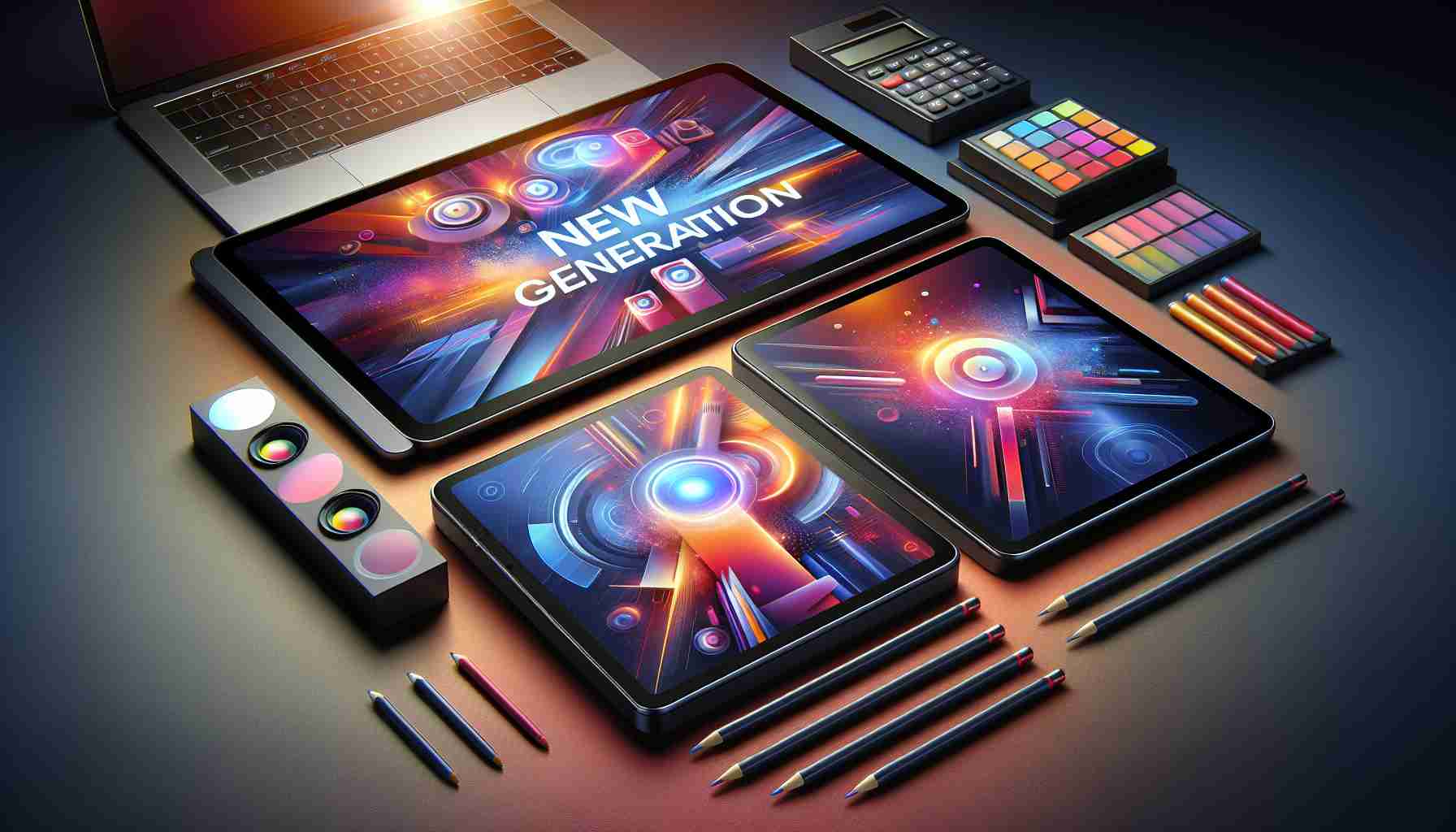With a fresh generation of iPads on the horizon, Apple is gearing up to shift the industry’s focus once more, this time from its acclaimed laptops to its versatile tablets. The innovative tech giant, which has been instrumental in reshaping the computing landscape with its M1 and M2 chipsets, is now hinting at the imminent arrival of a new wave of iPads—a lineup that has been dormant since the latter part of 2022.
Anticipation Builds for Upcoming Apple Event
The buzz began to build as Apple announced their next event scheduled for May 7, hinting at the launch of not just a new iPad, but an updated Apple Pencil as well. Invitations adorned with suggestive art sparked conversations among eagerly waiting fans and techanalysts alike.
The upcoming event is expected to showcase two distinct iPad Air models—one with a 10.9-inch display and its larger counterpart sporting a 12.9-inch screen. Speculation is rife that these latest iterations will bring significant enhancements, offering consumers even more reasons to consider the powerful tablets as laptop replacements.
iPad Pro Steps Up with OLED
Moreover, industry insiders are abuzz about the inadvertent revelation of an OLED upgrade for the new iPad Pro versions—a feature that promises to offer richer visuals and energy efficiency.
Apple has long championed the notion that the power of the iPad Pro, combined with peripherals like a stylus and keyboard, can meet—if not exceed—the requirements of those who traditionally seek out MacBook Air or MacBook Pro laptops. The App Store’s curated selection of applications continues to deliver tailored experiences for social, casual, and office functionality, albeit with the simplicity that distinguishes iOS from macOS.
The Strategic Shift in Focus
As the launch date approaches, Apple’s marketing gears are turning towards these innovative tablets. They aim to captivate users with the allure of portable power and adaptability—attributes that have become synonymous with the iPad experience.
Apple is poised to ride the wave of consumer anticipation for the new models, potentially leading to a surge in sales. However, for this transition period, they seem prepared to subtly downplay the MacBooks to shine the spotlight on the iPads’ latest advancements.
The article discusses the anticipation surrounding the upcoming launch of new-generation iPads by Apple and the company’s strategy to potentially focus more on iPads rather than MacBooks. It mentions upcoming models with OLED displays and the possibility of these devices replacing laptops for some users due to their power and versatility.
Important Questions and Answers:
1. How might the new iPads potentially replace MacBooks for some users?
The new iPads, especially the Pro models with OLED displays, are expected to offer enhanced visuals and performance that could rival laptops. Furthermore, when paired with peripherals like the Apple Pencil and keyboard, they could provide a similar user experience to a MacBook but with added portability and touch-screen capabilities.
2. What are the key challenges associated with this strategic shift?
One major challenge is convincing users that an iPad can fully replace a MacBook, especially for professional or power users who rely on specific software or a traditional computer interface for their work. Additionally, there could be concerns about the overlapping functionality and cannibalization of Apple’s own product sales.
3. Are there any controversies associated with this launch?
As of the knowledge cutoff date, there are no specific controversies mentioned in relation to the new iPad launch. However, Apple’s product launches often come with scrutiny regarding pricing, repairability, and environmental impact.
Advantages and Disadvantages of New iPads versus MacBooks:
Advantages:
– Portability: iPads offer greater portability compared to MacBooks.
– Touchscreen: The iPad’s touchscreen interface allows for a different interaction style, suitable for art, design, and casual use.
– Peripherals: Accessories like the Apple Pencil enhance the functionality of iPads for tasks like note-taking and drawing.
Disadvantages:
– Software Limitations: Some professional software is still not available or optimized for iOS.
– Interface: Users who prefer a traditional computer interface might find the transition to an iPad challenging.
– Hardware Expansion: iPads have less hardware expandability in terms of ports and storage expansion compared to MacBooks.
You can stay updated on Apple’s products and events by visiting their official website: Apple.
